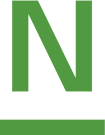Agile & digital transformation:
change consulting for a media company
To redevelop the current business model and position it for the market of the future. Consulting case of a media company in the context of Neuwaldegg’s change management consulting.
A media company’s top management recognises: the age structure of our readers is alarming, every day we are losing customers and the expectations of our future readers are changing towards digital requirements. The current business model and the way in which the publishing house operates are not sustainable. This trend in the media industry is confirmed internationally and it is only a matter of time before the financial aspect also becomes really critical. After the first workshop together it is clear: they now want to act from one strength, the time frame is tight at two years and it will also be a matter of tackling the organisation’s basic structures.
Learning organisational structure
The goals of agile transformation are primarily new digital products, technology-based work and decision-making processes and an agile learning organisational culture. The challenge here is to establish a new business model in the current day-to-day business and at the same time not lose sight of the existing model – after all, it still secures the bulk of the revenue. To create “both” of these, the following points are defined in the control architecture:
- Main strategic directions that provide a framework for the new products and services.
- Creating a common strategy that picks up on the company’s values and identity and involves the employees.
- Process logic that is aligned with agile principles: clearly defined roles, short sprints with regular learning cycles, fast prototypes.
Start with top management
It all starts with top management: the basic approach is decided, and the challenges are also hotly debated. It quickly becomes clear: a common purpose and strategy gives the organisation orientation and focus. The transformation map provides guidance on what is to be done and the new work (“how”) is practised in the “what”. Top management itself needs support in order to be a role model during this process and also to be the first to experiment with the challenges.
Purpose orientation with 4‑week sprints
A process architecture is developed with a core team (members of the organisation and consultants) that includes six different streams: reader market, content, business clients, technology, leadership performance and purpose. Following an energising “purpose & case for action” process, ten percent of the organisation members are involved in the streams. Cross-functionality, purpose orientation and agile working are core principles within these streams.
The streams’ different requirements are worked through, the results are evaluated and approved in review workshops in 4‑week sprints. Within these sprints, team members synchronise themselves in the form of stand-ups and team time, supported by DNA coaches (DNA=The New Work) and a digital exchange platform. In their role as sponsors, board members and managing directors have the task of representing their own streams to the outside world and establishing important links with stakeholders. This results in the smooth and fast process of working, adjusting and adapting by learning a lot from each other.
Trust is key in the agile process
The core team deals with general matters: processing and integrating developments and observations using the systemic cycle. Communicating the process’ progress in the form of messages, videos, workshops and much more. Overall control of the agile transformation process.
The key in this project is to establish trust in the agile process, which does not chart an exact path but relies on “build-measure-learn”. An intensive process with the managers, which works precisely with these uncertainties, helps here. The focus on a common purpose, hard facts and concrete initiatives in the sense of change help build the new. The agile process helps to integrate unplanned events quickly – without slipping back into old patterns.
